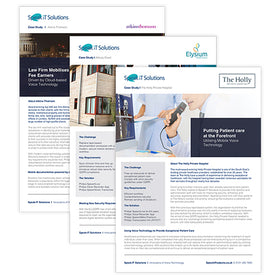What's the difference between MS-certified and UC headsets?
Choosing the Right Headset: Microsoft Teams-Certified vs. Universal Control
In a landscape of remote working and virtual collaboration, more and more people are using headsets with their computer and phone systems for taking calls, participating in meetings, and hosting webinars. For both individuals and businesses, understanding the differences between Microsoft Teams-certified (MS) headsets and Universal Control (UC) headsets can be crucial in making an informed decision. Here’s a detailed comparison to help you choose the best headset for your needs.
Microsoft Teams-Certified Headsets (MS)
Microsoft Teams-certified headsets are designed to integrate seamlessly with Microsoft Teams. Functionality often included in these headsets can be answering Teams calls, bring the Teams window to the front of all others, muting during meetings and more. These headsets must meet specifically outlined criteria and undergo rigorous testing to ensure they meet Microsoft's high standards for audio quality, user experience, and software integration. Here’s why Teams-certified headsets stand out:
- Optimised Integration: Teams-certified headsets offer optimised performance specifically for Microsoft Teams. This means that features such as call controls, mute buttons, and volume adjustments are directly integrated and fully functional within the Teams environment. Many of these headsets come with one-touch join for meetings, which simplifies the process of starting or joining a Teams meeting with minimal effort.
- Superior Audio Quality: Certification ensures that these headsets provide high-quality audio, both in terms of clarity and noise cancellation. Clear audio is critical in professional settings where effective communication can make a difference in team collaboration and client interactions.
- Enhanced User Experience: The integration of Teams-certified headsets with Microsoft Teams goes beyond just technical compatibility. These headsets are designed to enhance the overall user experience by offering features tailored to Teams' workflows, such as dynamic noise cancellation and built-in microphones optimised for voice clarity.
- Seamless Setup and Support: Teams-certified headsets often feature plug-and-play functionality, reducing setup time and minimising compatibility issues. Additionally, users benefit from robust support from both the headset manufacturer and Microsoft, including regular updates to ensure compatibility with new Teams features and updates.
View our MS-Certified headsets.
Universal Control Headsets (UC)
In contrast, Universal Control headsets are designed for broader compatibility across a range of communication platforms and devices. These headsets are versatile and can connect to various systems and applications, including Microsoft Teams, Zoom, Google Meet, and other VoIP services. Here’s what makes universal control headsets appealing:
- Versatility: Universal headsets are built to work with multiple platforms and applications. This versatility is ideal for environments where users may switch between different communication tools or where multiple platforms are in use. It provides flexibility for teams that rely on more than one communication tool.
- Broad Compatibility: These headsets typically offer multiple connection options such as USB, Bluetooth, or 3.5mm jack, making them suitable for a diverse range of devices and IT environments. This broad compatibility is particularly useful in organisations where employees use different types of hardware or software.
- Cost-Effectiveness: Universal headsets are often more budget-friendly compared to their platform-specific counterparts. They provide a cost-effective solution for teams that need reliable performance across various communication tools without requiring specialised devices for each platform.
- Flexibility and Adaptability: For organisations that use a mix of communication tools or have a fluid technology setup, universal control headsets offer the flexibility to adapt to different platforms. This can be especially useful in fast-paced or dynamic work environments where technology needs can change rapidly.
When selecting a headset, consider additional factors such as comfort, battery life (for wireless models like the Jabra Evolve2 85), and build quality. Nowadays, many manufacturers offer the same design headset but with either MS or UC functionality, but other features remain the same. This could be adjustable headbands, swing down microphone booms, or changeable foam earpads.
Choosing between MS and UC headsets depends on your organisation’s specific requirements. If your business/employer relies heavily on Microsoft Teams for meetings and calls and you need a headset that integrates seamlessly with this platform, MS headsets offer optimised performance and a streamlined user experience. Conversely, if your organisation uses multiple communication tools or requires a versatile, cost-effective solution, universal control headsets provide the flexibility and broad compatibility you need. By understanding these differences, you can select a headset that enhances productivity and supports your team’s communication needs effectively.








Leave a comment